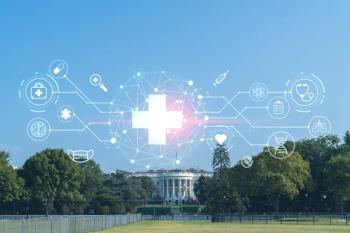
Generics Savings Continue, but Work Remains
Generic drugs make up 90% of prescriptions.
In 2016, generic drugs saved the U.S. health-care system $253 billion, according to a recent report. The ”2017 Generic Drug Access and Savings Report,” prepared for the Association for Accessible Medicine (AAM), found that generics saved U.S. health care $1.67 trillion in the last decade.
“New data shows almost 90% of prescriptions are filled by generics, but the costs associated with those medicines have decreased to just 26% of all spending on drugs,” said Chester “Chip” Davis, Jr., President and CEO of
Costs play a significant role in abandonment rates, the report found, since 90% of generic copays are under $20, compared to 39% of branded copays. The AAM report also found that abandonment rates for brand name drugs are 266% higher than for generics.
“It is not news that branded prices - especially for branded specialty medications - are high. Price sensitivity for patients with regard to their prescriptions is also well-documented,” Allen Goldberg, Vice President of Communications for AAM, told Drug Topics. “Our mission is to ensure access to as many patients who will benefit from medication as possible. That is why curbing anticompetitive practices by some pharma companies is so critical.”
Among AAM’s legislative priorities designed to prevent anticompetitive practices is the Creating and Restoring Equal Access to Equivalent Samples Act of 2017 (the CREATES Act), a bill introduced in Congress this spring. It remedies a situation in which some branded drug companies block generic companies from developing generic and biosimilar alternatives for patients, according to AAM.
Related article:
For example, Revlimid (lenalidomide, Celgene), a drug to treat certain blood cancers, is the second highest drug spend in Medicare Part D’s catastrophic coverage program, costing more than $1.7 billion per year. “Generic manufacturers have been thwarted in their attempts to bring an equally safe and effective version of this drug to market since 2013,” AAM said in a statement.
“The Congressional Budget Office (CBO) has estimated that similar legislation would save the government more than $3 billion in direct savings over 10 years,” AAM said.
CVS Health, Express Scripts, AARP, AAM, the Academy of Managed Care Pharmacy, the Blue Cross Blue Shield Association, and other organizations wrote a letter to senators stating: “Certain companies are employing restricted distribution networks to deny manufacturers of generics and biosimilars access to samples of brand products that are needed to obtain FDA approval and market entry.”
The 2017 Generic Drug Access and Savings Report also noted:
- The federal government is the nation’s largest purchaser of generic drugs. Without generics, Medicaid and Medicare spending on prescription medicines would nearly double.
- Medicare savings from generics totaled $77 billion in 2016 with savings of $1,883 per enrollee. Medicaid program savings from generics reached $37.9 billion, which is savings of $512 per enrollee.
- The greatest savings from generic drugs were found in mental health ($44 billion), hypertension ($29 billion), and cholesterol ($28 billion) treatments.
- In 2016, the use of generic drugs saved each state an average of $4.9 billion, compared to the price of relevant branded medicines, meaning that state Medicaid savings averaged $744 million and state Medicare savings averaged $1.5 billion per state.
Newsletter
Pharmacy practice is always changing. Stay ahead of the curve with the Drug Topics newsletter and get the latest drug information, industry trends, and patient care tips.
























































































































